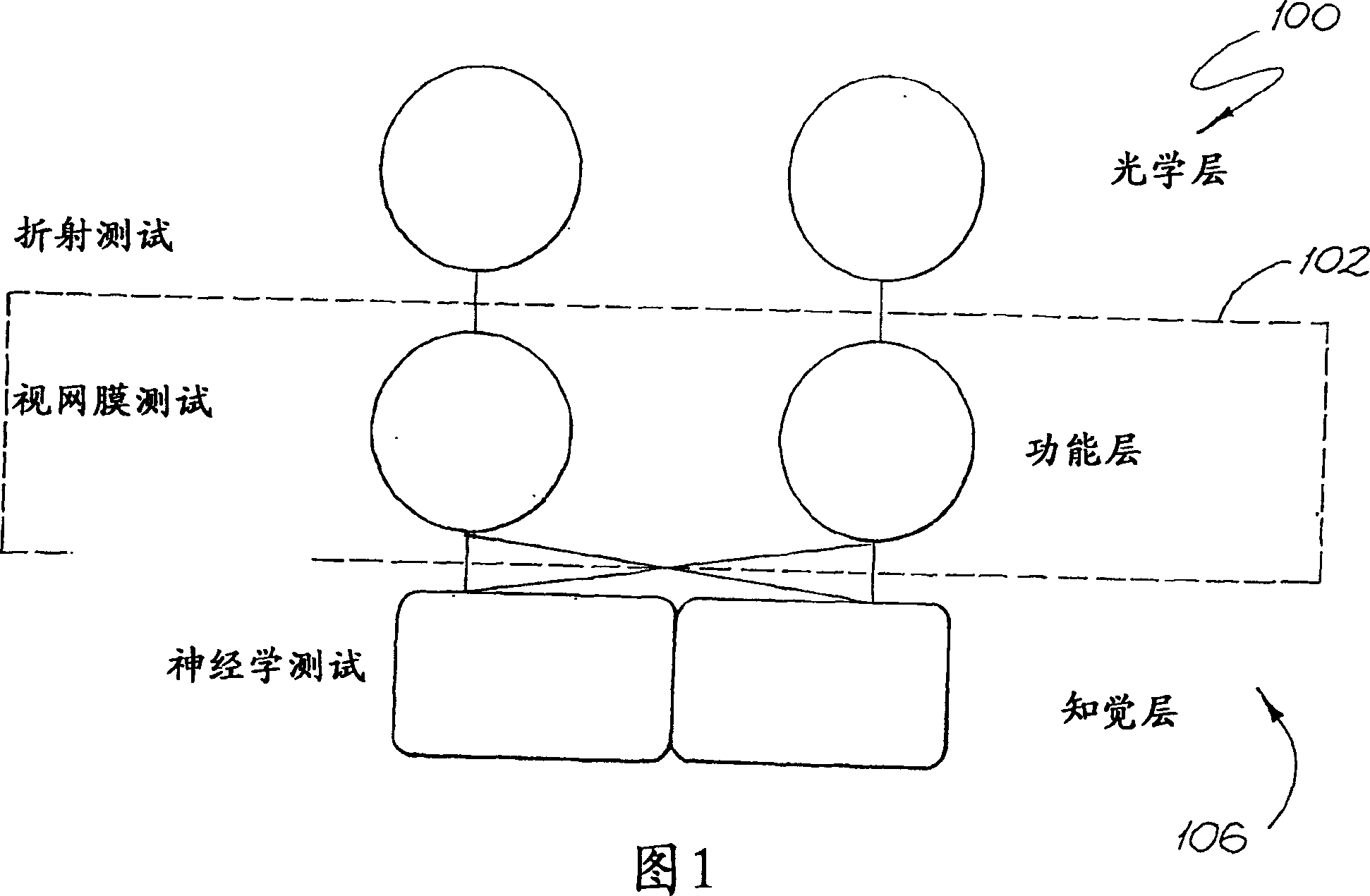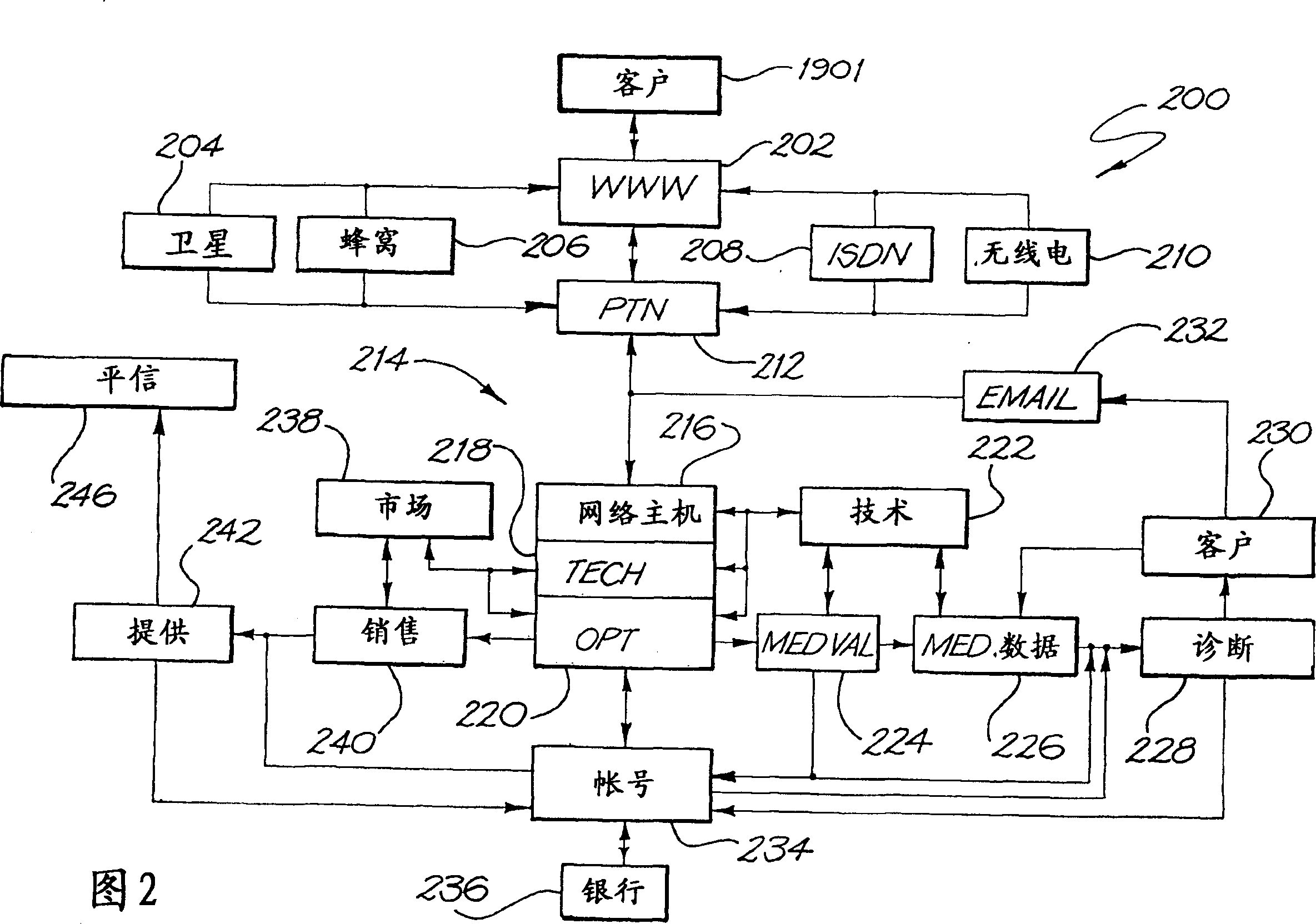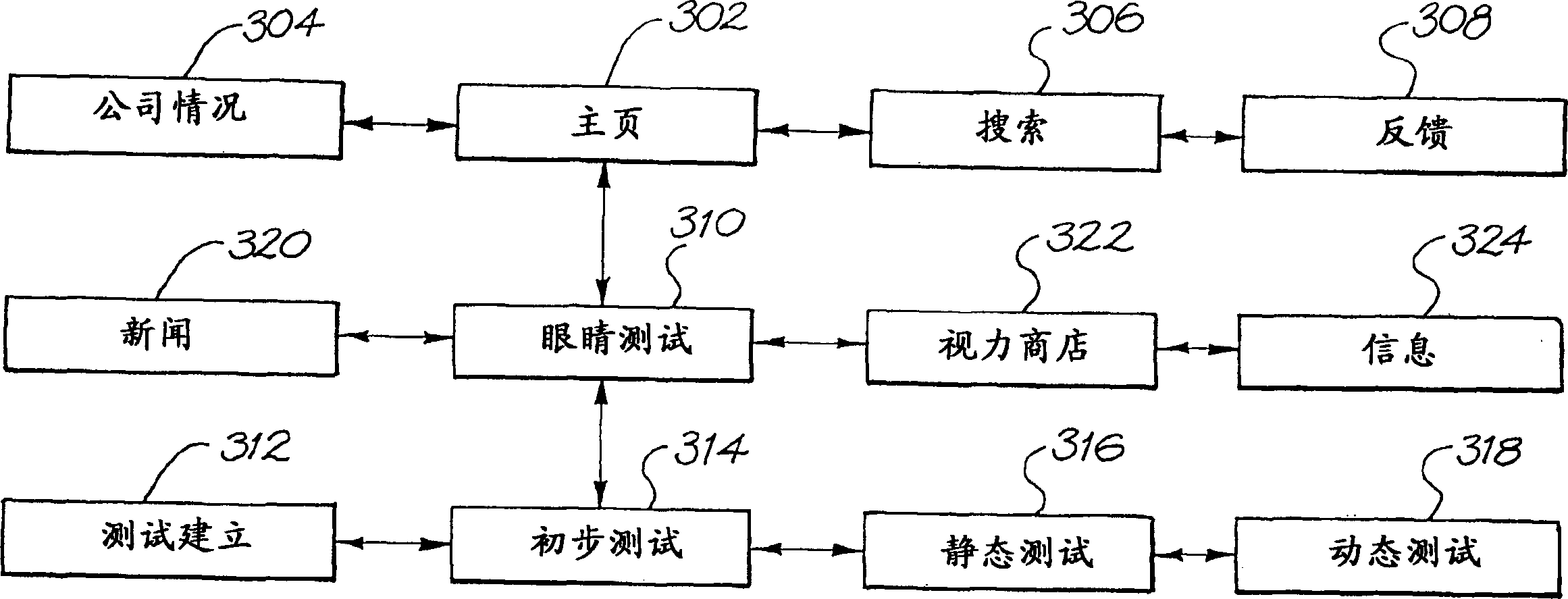Vision testing system
A vision and target technology, applied in the field of lens-free vision testing, can solve problems such as expensive devices and lack of optometry services
- Summary
- Abstract
- Description
- Claims
- Application Information
AI Technical Summary
Problems solved by technology
Method used
Image
Examples
Embodiment Construction
[0089] Vision tests in optometry clinics typically make extensive use of lenses. Disclosed herein is a vision analysis system that does not require the use of lenses. The absence of lenses is achieved by a computer-based vision testing system incorporating a program that allows vision testing to be performed on a video display unit, such as a computer monitor, and which can be performed at a location remote from the optometrist.
[0090] The remote vision test disclosed herein has two basic parts: vision test and vision diagnosis. Vision testing may be performed using a computerized remote vision testing device operated by the patient or an assistant. The computer is typically connected to a network, such as the World Wide Web (WWW), to allow access to other computers engaged in diagnostic evaluation.
[0091] The vision testing methods described herein preferably use a conventional general purpose computer system 1900, such as at Figure 19 2 to 18 may be implemented as so...
PUM
 Login to View More
Login to View More Abstract
Description
Claims
Application Information
 Login to View More
Login to View More - R&D
- Intellectual Property
- Life Sciences
- Materials
- Tech Scout
- Unparalleled Data Quality
- Higher Quality Content
- 60% Fewer Hallucinations
Browse by: Latest US Patents, China's latest patents, Technical Efficacy Thesaurus, Application Domain, Technology Topic, Popular Technical Reports.
© 2025 PatSnap. All rights reserved.Legal|Privacy policy|Modern Slavery Act Transparency Statement|Sitemap|About US| Contact US: help@patsnap.com



